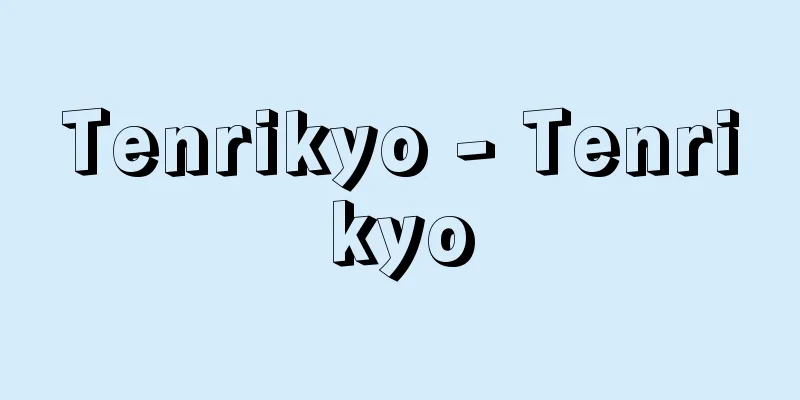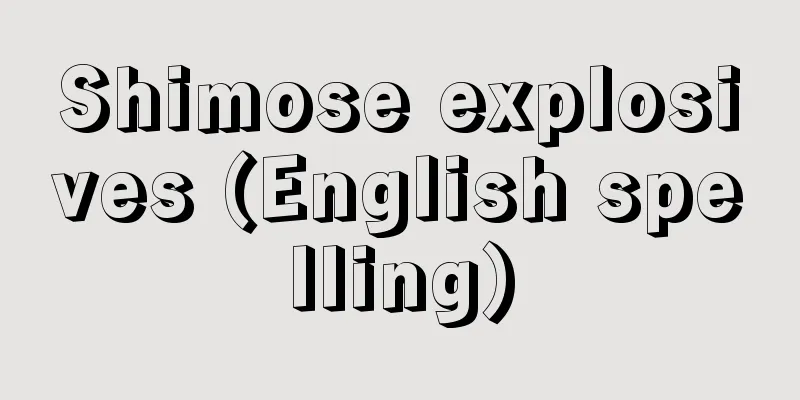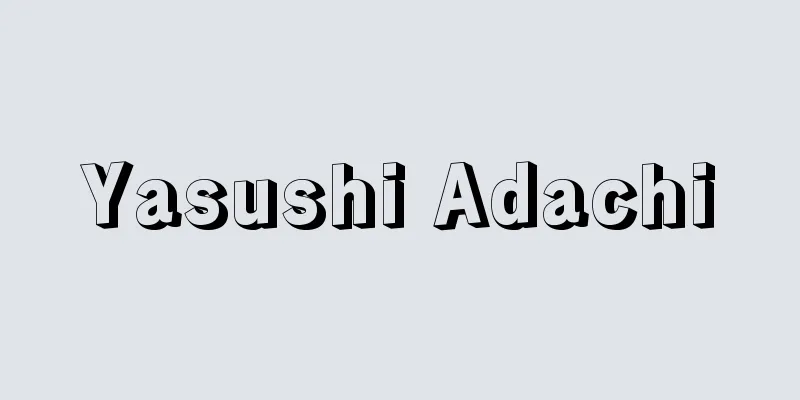Tenrikyo - Tenrikyo

|
This religion was established between 1838 (Tenpo 9) and 1887 (Meiji 20) based on the teachings of the creator god of humankind (called "Parent God" or "Tenri-O-no-Mikoto"), preached by Nakayama Miki, a farmer's wife in Yamato Province (Nara Prefecture). On October 26, 1838, Nakayama Miki received divine revelation and became "God's Shrine" (the communicator of divine will), and for the next 50 years, she continued to preach God's will despite ridicule and persecution. According to Miki's teachings, Parent God created the human world in order to enjoy humans' "joyful lives," but humans, following their own free will, have rebelled against God's will and brought suffering upon themselves. To save these people, the Parent God appears, reveals the "original principle" of human creation, teaches the "Kagura Duties" for returning to that "original", gives the "principle of Sazuke" for relief from illness, and sets in motion the process of restoring the world to a "happy life". After Miki's death, his senior disciple Iburi Izo (1833-1907) conveyed the divine message until 1907 (Meiji 40). During that time, the church was approved as the Tenrikyo Church under the direct control of Shinto in April 1888, and was officially recognized as an independent sect of the Shinto religion in 1908. After the Second World War, freedom of religion was finally achieved, and under the leadership of the second Shinbashira, Nakayama Shozen (1905-1967), the original teachings of the founder, which had been suppressed until then, were made public, and the sect broke away from the framework of sectarian Shinto. Tenrikyo's sacred scriptures are the Ofudesaki and Mikagura Uta, written by Miki, and the Osashizu, a record of the divine words passed down through Miki and Izo. The headquarters is located in Mishima, Tenri City, Nara Prefecture, and the center of the shrine is the "original Jiba" of human creation, and worship is provided from all four sides. The sect also operates various facilities, including a library, reference center, hospital, and schools such as universities and high schools. The sect is organized with the headquarters at the top, as well as a large church, branch churches, and missionary stations. There are 16,358 churches, 16,908 missionary stations, 148,141 teachers, and 1,169,275 believers (Religious Yearbook, 2014 edition). Sports activities, including judo, baseball, and hockey, are also popular. [Shigeru Matsumoto] "Tenrikyo Faith and Philosophy" by Matsumoto Shigeru, 3 volumes (1983, Tenrikyo Doyusha)" ▽ "Tenrikyo Scriptures, revised edition, edited by Tenrikyo Church Headquarters (1984, Tenrikyo Doyusha)" ▽ "Teramachi Takeo, 21st Century Interpretation of Tenrikyo Doctrine: Exploring the True and Divine Meaning of 'Yoki Gurashi'" (1991, Zensha Publishing)" ▽ "Tenrikyo Founder Nakayama Miki" by Yabu Keizo (1995, Takashobo Yumi Press)" ▽ "An Introduction to the Theory of Tenrikyo Founder" by Fukaya Tadamasa (1996, Tenrikyo Doyusha)" ▽ "Otani Wataru, A Historical Study of Tenrikyo" (1996, Toho Publishing)" ▽ "Miyata Hajime, The Connection Between God and Humans: How Do We See the World" (1996, Tenrikyo Doyusha)" ▽ "Tenrikyo Dictionary, compiled by the Oyasato Research Institute attached to Tenri University (1997, Tenrikyo Doyusha)" ▽ "Kinoshita Tamiyoshi, "Lifestyles for Coexistence -- An Introduction from Tenrikyo Doctrine" (1998, Zensha)" ▽ "Kotaki Toru, "Oyasama -- The Biography of Tenrikyo Founder Nakayama Miki" (2000, Nara Shimbun)" ▽ "Yamochi Tatsuzo, "Tenrikyo's View of Life" (2000, Tenrikyo Doyusha)" [References] | | | | | |Source: Shogakukan Encyclopedia Nipponica About Encyclopedia Nipponica Information | Legend |
|
1838年(天保9)から1887年(明治20)にかけて大和(やまと)国(奈良県)の農家の主婦であった中山みきの説いた人類創造神(「親神(おやがみ)」「天理王命(おうのみこと)」と呼称)の教えに基づいて成立した宗教。教祖中山みきは1838年10月26日天啓により「神のやしろ」(神意伝達者)となり、以来50年間、嘲笑(ちょうしょう)や迫害のなかで神意を説き続けた。みきの教えによれば、親神は人間の「陽気ぐらし」を楽しみに人間世界を創造したが、人間は心の自由のままに神意に背き、自らに苦悩を招いてきた。その人間を救(たす)け上げるために親神が現れ、人間創造の「元(もと)の理」を明かし、その「元」へ帰るための「かぐらづとめ」を教え、身上(みじょう)(病苦)救けのための「さづけの理」を渡し、世界を「陽気ぐらし」の世に立て替える段取りを進めるという。みきの没後は高弟飯降伊蔵(いぶりいぞう)(1833―1907)が1907年(明治40)まで神言を伝える。その間に、1888年4月神道(しんとう)直轄天理教会として認可され、1908年には教派神道の一派として独立を公認される。第二次世界大戦後、ようやく信教の自由を得、2代真柱(しんばしら)中山正善(しょうぜん)(1905―1967)の指導のもと、それまで抑えられていた教祖の本来の教えが表に出され、教団は教派神道の枠から離脱した。天理教の聖典は、みきの直筆である『おふでさき』と『みかぐらうた』、およびみきと伊蔵を通しての神言の筆録『おさしづ』の三つである。本部は奈良県天理市三島にあり、神殿の中央は人間創造の「元のぢば」として四方から礼拝する形になっており、教団の経営する図書館、参考館、病院などの諸施設、大学・高校などの学園も整備されている。教団は本部を頂点として、大教会―分教会―布教所などに組織されている。教会数1万6358、布教所数1万6908、教師数14万8141、信者数116万9275(『宗教年鑑』平成26年版)。柔道、野球、ホッケーなどをはじめスポーツ活動も盛んである。 [松本 滋] 『松本滋著『天理教の信仰と思想』全3巻(1983・天理教道友社)』▽『天理教教会本部編『天理教教典』改訂版(1984・天理教道友社)』▽『寺町武夫著『天理教教理の21世紀的解釈――“陽気ぐらし”のしん(深・真・神)意を探る』(1991・善本社)』▽『藪景三著『天理教教祖(おやさま)中山みき』(1995・鷹書房弓プレス)』▽『深谷忠政著『天理教教祖論序説』(1996・天理教道友社)』▽『大谷渡著『天理教の史的研究』(1996・東方出版)』▽『宮田元著『神と人間のつながり――世界をどう見るか』(1996・天理教道友社)』▽『天理大学附属おやさと研究所編『天理教事典』(1997・天理教道友社)』▽『木下民善著『「共生」へのライフスタイル――天理教教理からの序説』(1998・善本社)』▽『小滝透著『おやさま――天理教教祖中山みき伝』(2000・奈良新聞社)』▽『矢持辰三著『天理教の人生観』(2000・天理教道友社)』 [参照項目] | | | | | |出典 小学館 日本大百科全書(ニッポニカ)日本大百科全書(ニッポニカ)について 情報 | 凡例 |
Recommend
Travel Diary - Ryokouki
〘 noun 〙 A record of various things such as what o...
Japanese Economic Encyclopedia - Japanese Economic Encyclopedia
This is a collection of documents on legal systems...
Stockings - Shitouzu
A corrupted form of "shitagutsu" (socks...
Doll Pass - Ningyo Touge
A pass on the border between Misasa Town, Tohaku ...
Kristianstad
The capital of Kristianstad County in southern Swe...
Karyotype - Karyotype
A symbolic representation of the shape, size, and ...
Omotokyo - Omotokyo
A new religion based on syncretic Shinto. Its fou...
Akimenes longiflora
...Growth stops in autumn, and the above-ground p...
Eiseiroku - Eiseiroku
During the Meiji Restoration, an unlimited stipend...
âşık (English spelling) asik
...A Turkish plucked string instrument (illustrat...
Bonnefoy - Yves Bonnefoy
French poet. Also known as an art critic and Shak...
Bauschinger's effect
A unique phenomenon that occurs when a metallic ma...
Gibbs, Josiah Willard
Born: February 11, 1839 in New Haven, Connecticut ...
Cartier Latin - Cartier Latin
A district in the 5th and 6th arrondissements on t...
Hikohachi Yonezawa
Rakugo performer. (First generation) [?-1714] The ...









![Misaki [town] - Misaki](/upload/images/67ccf015ef325.webp)